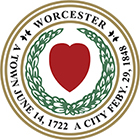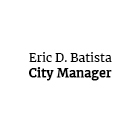


For Immediate Release: 10/1/2019 4:50 pm
The City of Worcester has been awarded $5.6 million in federal grants from the U.S. Department of Housing and Urban Development’s (HUD) Office of Lead Hazard Control and Healthy Homes.
The City received a $5 million grant in Lead Hazard Reduction program funding and an additional $600,000 in Healthy Homes initiative funding for citywide use for qualified property owners. This is the largest award the City has ever received for the abatement of lead paint hazards. In April 2018, HUD awarded the City with a Grantee of Distinction award for its use of lead funding. Since 2007, the city has been awarded more than $15 million in Lead Paint Abatement and Healthy Home grants.
For the current grant, the City will address lead hazards in 250 housing units providing safer homes for low and very low-income families with children. The City will also perform healthy homes interventions in 120 units. The City will collaborate with a diverse set of local partners to accomplish this work, including UMass Memorial Children’s Medical Center, the Southeast Asian Coalition and the Edward M. Kennedy Community Health Center. In coordination with our community partners, the City will provide a united message regarding the health conditions caused by our housing stock, including lead poisoning and asthma.
The $600,000 Healthy Home Intervention supplemental unit funding will be based upon conducting Healthy Homes Rating System analysis in the 29 housing hazards identified in the Healthy Home Rating System. The proposed uses include but are not limited to: Damp & Mold Growth, Radiation, Falls on Level Surface and Stairs, Domestic Hygiene, Personal Hygiene, Sanitation and Drainage, Electrical Hazards, and Building Code Issues.
“As a city, and as a community, keeping our children and families healthy is always a priority,” said City Manager Edward M. Augustus Jr. “This federal funding will help strengthen our local efforts to further reduce childhood lead poisoning within our diverse housing stock. We’re committed to keeping our housing options as safe as possible for everyone.”
“This is incredible news for the City of Worcester,” said Congressman Jim McGovern. “Every family deserves a healthy place to call home, and every child deserves a safe environment to learn and grow. Many of Worcester’s homes are over a hundred years old, so protecting against lead poisoning here poses a unique challenge. These federal dollars represent a huge investment in Worcester’s future. I look forward to continuing to partner with city leaders to support safe, healthy low-income housing options for all our families.”
Worcester is considered a gateway city, which includes a large percentage of housing stock from the industrial revolution era (1880-1920). As such, a large percentage of housing stock is multi-family housing, which was used to house factory workers. Due to the large percentage of deferred maintenance on these properties, there is a continued need to rehabilitate and make this housing stock healthy and safe for children under six years of age.
According to the American Community Survey Five-Year Estimate, 33,231 housing units in Worcester were built before 1940 and 61,988 were built before 1978 (87% of the overall housing stock).
Worcester is home to 14,009 children under six years of age. These children live in 7,911 units throughout the city, with 19.4% of families with children under the age of five living below the poverty line. In 2018, 5,543 children between 9-47 months of age were tested for lead. Of those tested, 85 (1.5%) had a blood lead level (BLL) greater than 5ug/dL and 27 (0.5%) had a BLL of greater than 10ug/dL.
The City of Worcester currently has a 77% initial screening rate, which is higher than the state average of 73%, yet remains a high-risk community for childhood lead poisoning. Massachusetts requires all children to be tested between 9-12 months, and at two and three years of age. All children are required to be tested prior to entering daycare, pre-kindergarten, or kindergarten.